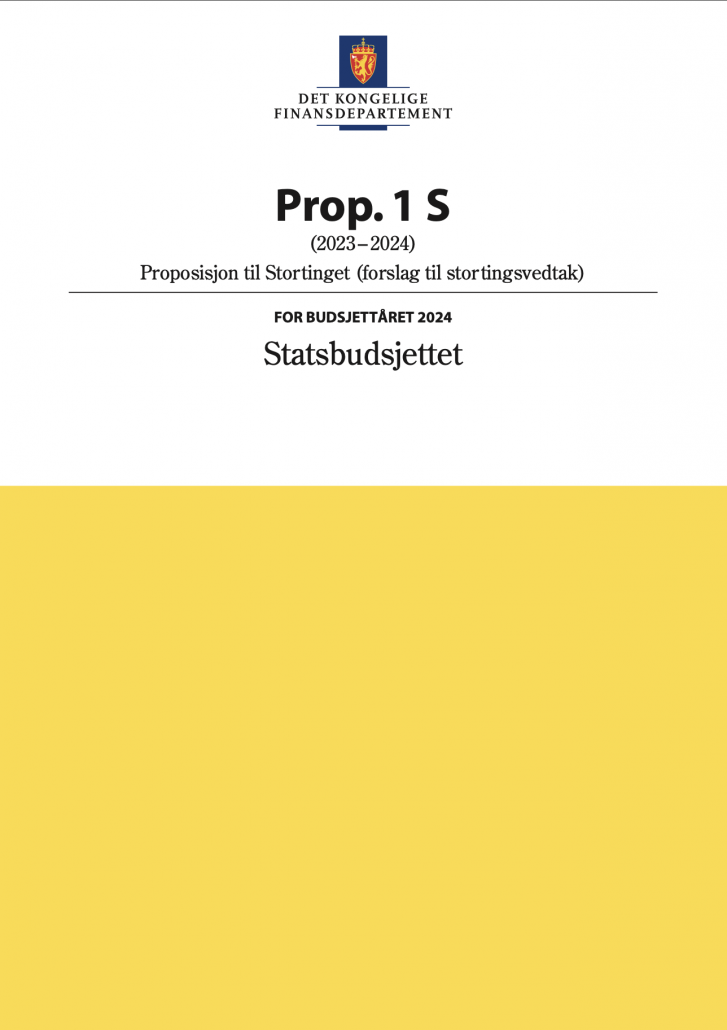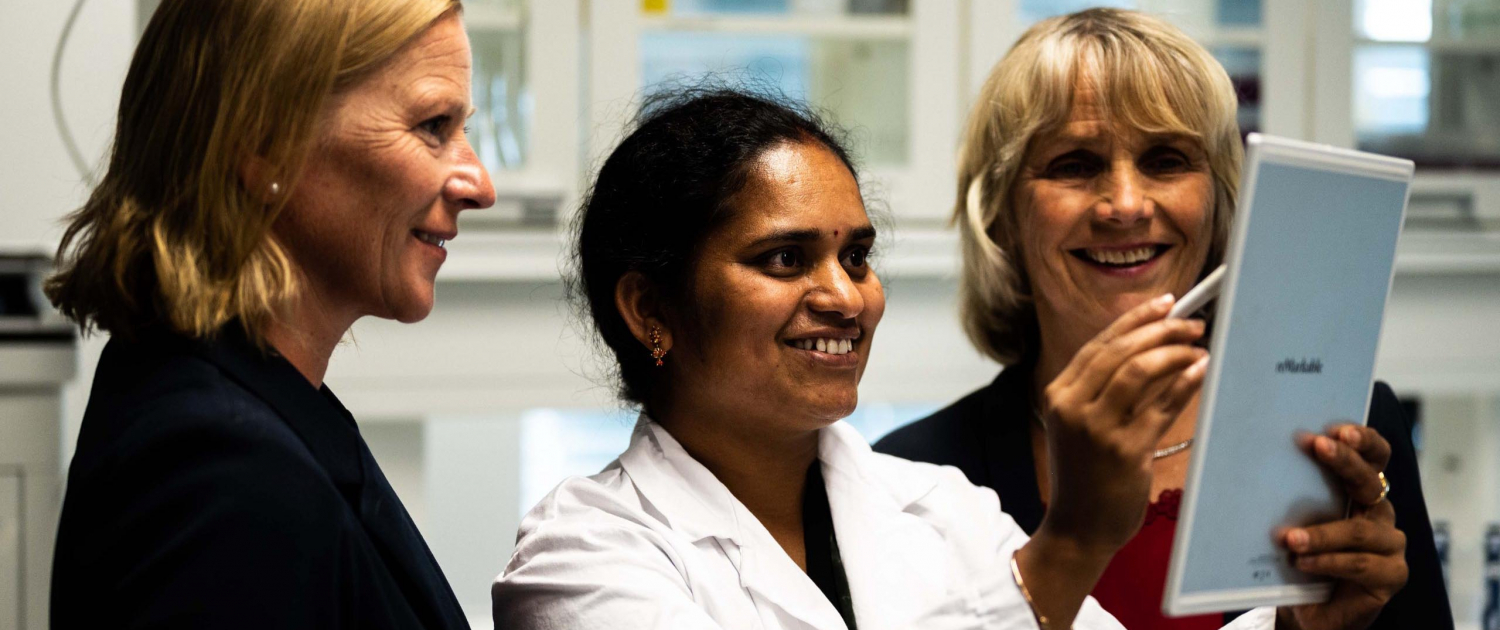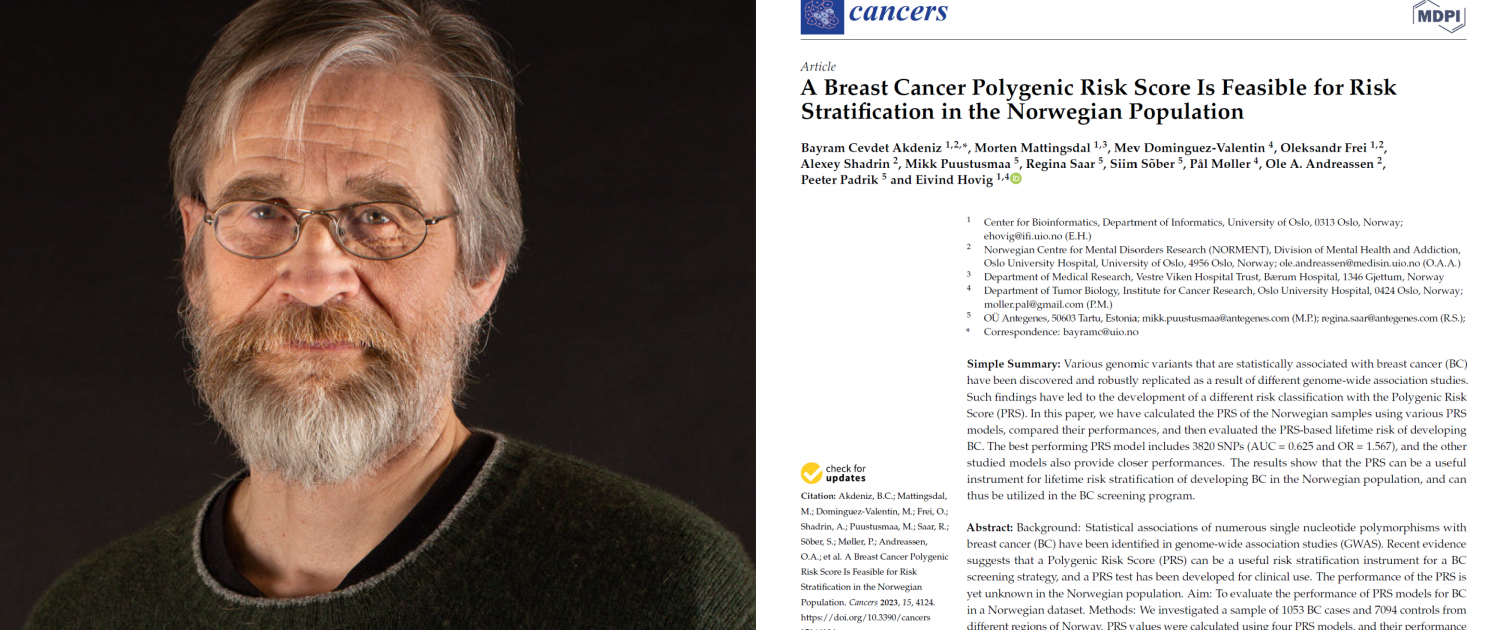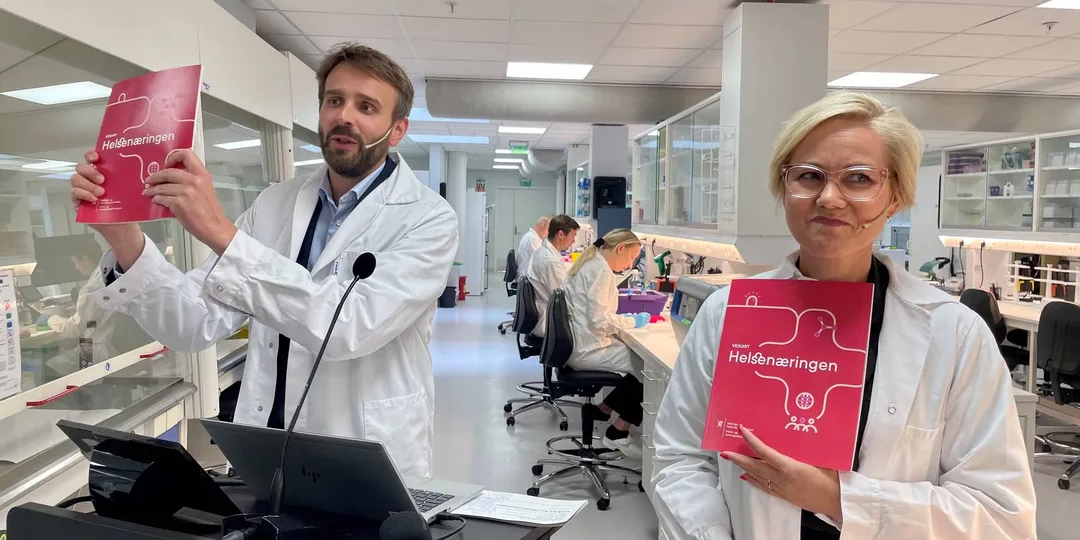Statsbudsjettet 2024

Her er de viktigste sakene i statsbudsjettet 2024 for Oslo Cancer Clusters medlemmer.
Vi har sett nærmere på statsbudsjettet for neste år, og funnet disse lyspunktene for våre medlemmer.
Ekstra til tidligfase
En gründerpakke på 220 millioner kroner ligger ligger bakt inn i statsbudsjettet. 70 millioner av disse kronene skal gå til å styrke Innovasjon Norges ordninger for etablerere og vekstselskap. I tillegg foreslår regjeringen å sette av 150 millioner kroner til investeringer i tidligfasebedrifter gjennom Investinor. Dette er gode nyheter, mener Ketil Widerberg, daglig leder i Oslo Cancer Cluster.
– Offentlig støtte og såkornmidler er et viktig element i å utvikle ny norsk helsenæring, og satsingen er velkommen!
En liten justering og påminnelse er likevel på sin plass.
– Samtidig, med tanke på nye bioteknologiselskap innen kreft, trengs en kraftigere innsats om vi skal lykkes med å tiltrekke og utvikle ideene. Lange utviklingsløp krever betydelig risikoavlastende kapital i tidlig fase. For eksempel hentet nylig radiofarmasiselskapet ArtBio inn 250 millioner kroner bare på en første investeringsrunde, sier Ketil Widerberg.
Les mer om ArtBios første investeringsrunde i MedWatch.
Persontilpasset medisin
Et tilskudd på 110,9 millioner kroner foreslås videreført fra 2023 til persontilpasset medisin. Tilskuddet finansierer blant annet etablering og drift av nasjonalt genomsenter, infrastruktur for presisjonsdiagnostikk (InPred) og det nasjonale kompetansenettverket innenfor persontilpasset medisin (NorPreM). Ketil Widerberg mener at det er gledelig at persontilpasset medisin blir prioritert videre til neste år.
– Persontilpasset medisin er viktig for pasienter, som slipper mange bivirkning og får effektive medisiner. Det er også et område der vi i Norge er i forskningsfronten, har et innovativt samarbeid i det offentlig-private konsortiet CONNECT, og har lovende oppstartsfirmaer som Zelluna Immunotherapy og andre i vårt økosystem.
Les mer om CONNECT på konsortiets hjemmeside.
I en helhetlig satsing på persontilpasset medisin, er diagnostikk og spesielt gentester vesentlige ingredienser.
– Gentester burde satses på i større grad.
Kartlegger helsekatapult
Tilskuddene til testfasiliteter for oppstartsbedrifter skal økes som et ledd i regjeringens politikk for en grønn omstilling av norsk næringsliv. Konkret vil det si 26 millioner kroner mer til testfasiliteter gjennom Sivas katapultordning i 2024.
Per i dag finnes fem sentre under katapultordningen. De dekker produksjonsteknologi, materialteknologi, digitalisering, hav og marin teknologi og fornybar energi. Det finnes ikke noe eget katapultsenter for helse, men helse var blant fire prioriterte områder i forprosjekter som ble gjennomført i 2019/2020 for ny utlysning av ordningen. I regjeringens veikart for helsenæringen, som ble lansert i august, ba regjeringen Siva, i samarbeid med Forskningsrådet og Innovasjon Norge, om å utrede hvordan helsenæringen i større grad kan få nytte av katapultordningen. Nå øremerkes to millioner statsbudsjettkroner til en slik kartlegging, som del av de nevnte 26 millionene til testfasiliteter. Ketil Widerberg er glad for det.
– Vi er glade for at helsekatapult blir prioritert, og ser frem til å jobbe med de andre helseklyngene for å realisere potensialet for at norsk forskning skal kunne bli til helsenæring og fremtidige industrieventyr.
Totalt får ordningene Norsk katapult og Grønn plattform 214,3 millioner kroner i 2024.
Regjeringens pressemelding kan leses her.
Helsenæring som eksport
Regjeringen foreslår å sette 94,7 millioner kroner inn på å fremme norsk eksport i 2024. Det er en økning på 45 millioner kroner, som et ledd i eksportreformen Hele Norge eksporterer, der helsenæring er ett av årets to nye satsingsområder, som blir lansert av regjeringen i løpet av høsten.
Budsjettpengene går først og fremst til Innovasjon Norges internasjonale satsinger, stiftelsen Norwegian Energy Partners (Norwep), arbeid med eksportprogrammet og profilering. De ulike eksportsatsingene presenteres som prosjekter i denne posten, og har ikke fått øremerkede midler.
Nasjonal kreftstrategi
Til neste år vil regjeringen presentere en oppdatert kreftstrategi, som også skal tre i kraft til neste år. Det følger ingen budsjettmidler med.
I den nye strategien skal ny kunnskap på kreftområdet ivaretas, samtidig som de fem overordnede målene videreføres fra nåværende strategi:
- Norge skal bli et foregangsland for kreftforebygging
- Norge skal bli et foregangsland for gode pasientforløp
- En mer brukerorientert kreftomsorg
- Flere skal overleve og leve lenger med kreft
- Best mulig livskvalitet for kreftpasienter og pårørende
– Vi mener det er viktig å se på hvordan vi samarbeider for å nå målene, sier Ketil Widerberg.
Han understreker at ulike samarbeid må være en del av selve strategien.
– Vi har flere etablerte samarbeidsarenaer som vi må videreutvikle, som den norske mission huben, CONNECT-samarbeidet på presisjonsmedisin, og helseklyngesamarbeidet. Det er også rom for bedre samarbeid mellom norske og internasjonale institusjoner, mellom offentlige og private aktører, og på tvers av nasjonale siloer. Hvordan vi samarbeider må være en integrert del av en kreftstrategi – og en mulighet til å få til mer uten flere budsjettkroner, sier Ketil Widerberg.
Les mer om den norske mission huben på cancermission.no.
Ny helseteknologiordning
Helse- og omsorgstjenestene skal bli enklere og mer brukervennlige. Derfor foreslår regjeringen 150 millioner kroner til en ny helseteknologiordning, og 100 millioner kroner til utvikling av digital samhandling i helse- og omsorgssektoren. En helseteknologiordning skal gi kommunene drahjelp for å investere i og ta i bruk helseteknologi. Kommunene kan søke om tilskudd for å skaffe digitale løsninger og finne leverandører.
– For kreftpasienter betyr det mye hva slags teknologi som er tilgjengelig der de bor, for å få en effektiv oppfølging etter kreftsykdom. Vi ser derfor frem til at en satsing på helseteknologiordning vil kunne bidra til bedre oppfølging av pasientene.
Til grunn ligger en ramme på 1,25 milliarder kroner over seks år for å gjennomføre de nasjonale tiltakene for digital samhandling. Her gjelder det å bruke pengene smart, og etablere det vi mangler innen helseteknologi.
– For å gjøre bruk av ny teknologi i helse, mangler vi etablerte prosesser, budsjetter og samarbeid om helseteknologi, slik som vi har på legemidler. Spesielt blir dette tydelig for digitale løsninger, sier Ketil Widerberg.
Andre kreftrelaterte bevilgninger
- Tarmkreftscreeningprogrammet fortsetter med videreførte 215,1 millioner kroner.
- Hjemmetest i livmorhalsprogrammet får 26 millioner kroner i 2024.
- Hudkreftstrategien og UV-nettverket får 2 millioner kroner ekstra, som blant annet skal gå til oppmerksomhetskampanjer.
The post Statsbudsjettet 2024 first appeared on Oslo Cancer Cluster.


 Surviva
Surviva


